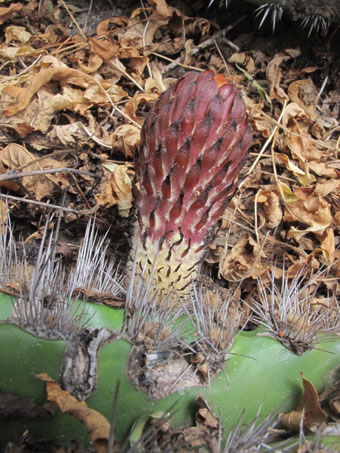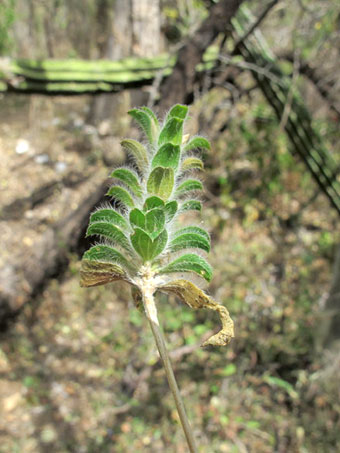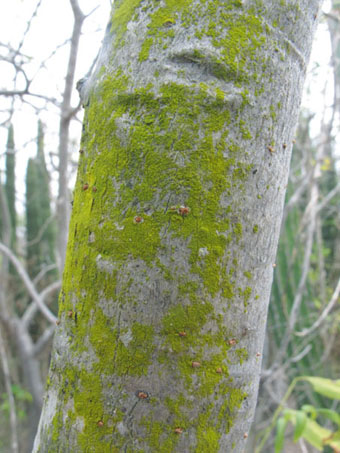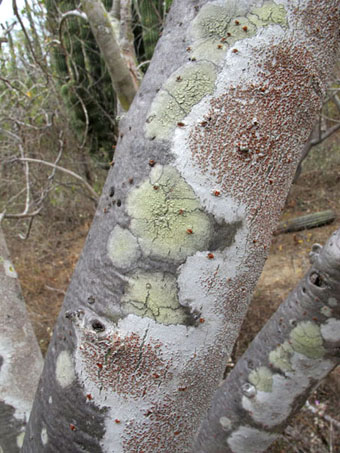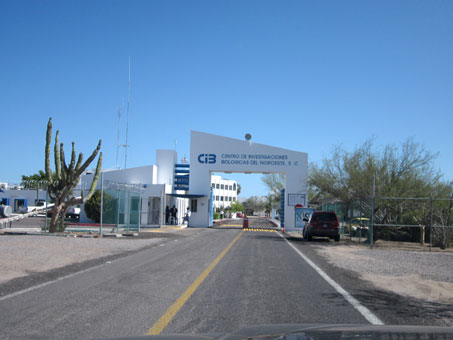This section contains entries about our botanizing in Baja California written for the UC BEE (Oct 2012 to Aug 2021)
and The UC Bee Hive (2022-), monthly newsletters for volunteers and staff of the UC Berkeley Botanical Garden.
Click on any photo for a larger image.
BEE MAY 2015
Adventures Around La Paz
This month, we made our annual trip further south to La Paz and Todos Santos. Last year we went in late January and early February and had time for a field trip to the Sanctuary. You can read more about the Sanctuary and that trip here.
El Santuario de los Cactus (Cactus Sanctuary), El Rosario — March 2015
This year, I really wanted to see how the Sanctuary had fared with the passage of Hurricane Odile in September 2014. It was looking very ragged indeed and it can still use a few dozen volunteers to help give it a good cleanup. Any takers out there? Road trip, anyone?
Odile was a Category 3 hurricane when it hit Cabo San Lucas head on and it was still very strong as it passed northward over Todos Santos, the Sanctuary and La Paz. It tracked right up the middle of the peninsula, hitting Loreto, Mulegé and San Ignacio before crossing over the Gulf near Bahía de los Ángeles and the Sonoran coast. See the January 2015 entry for more about the effects of the storm.
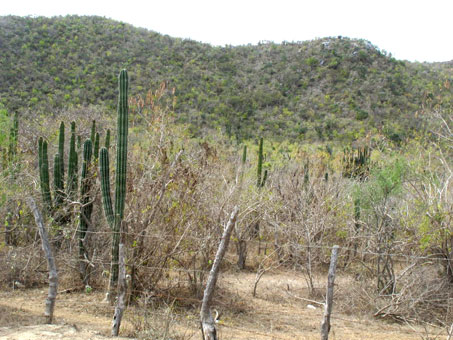
The Sanctuary is located on the edge of the low arid tropical forest, which was still showing the effects of all the rain from Odile. The columnar cacti on the left are Cardón Barbón (Pachycereus pecten-aboriginum), common in the Cape Region.
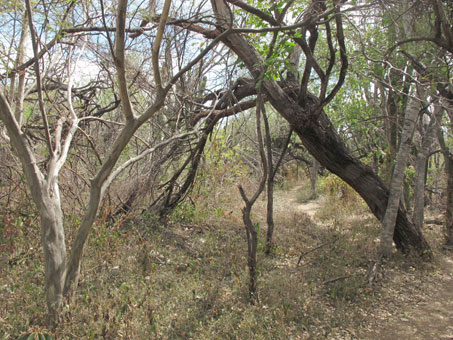
Inside the fenced area of the Sanctuary.
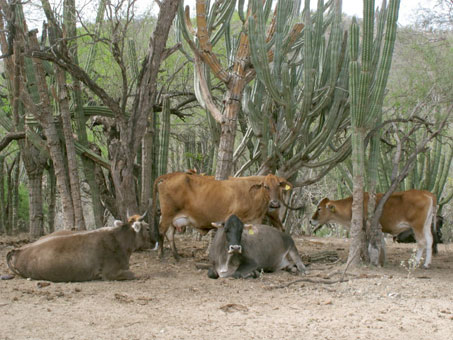
If the Sanctuary weren't fenced, these bovines would munch everything in it to bare dirt in no time at all, as they have demonstrated here across the road from the Sanctuary.
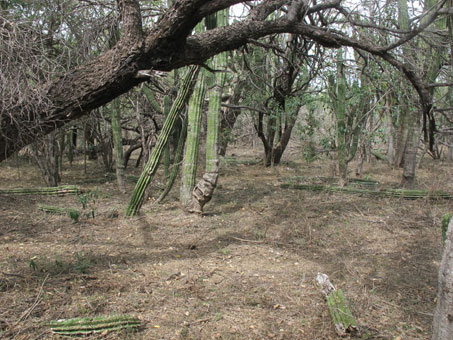
Right on the other side of the fence.
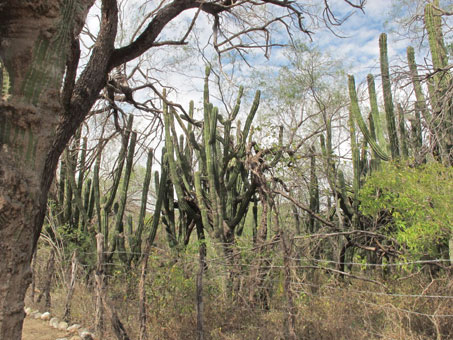
Dense understory within the Sanctuary.
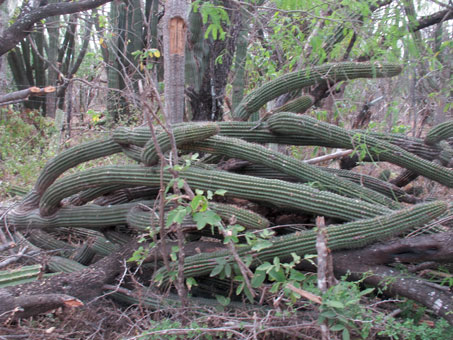
The damage to the giant cacti was visible immediately on entering the sanctuary. Organpipe Cactus / Pitahaya dulce (Stenocereus thurberi).
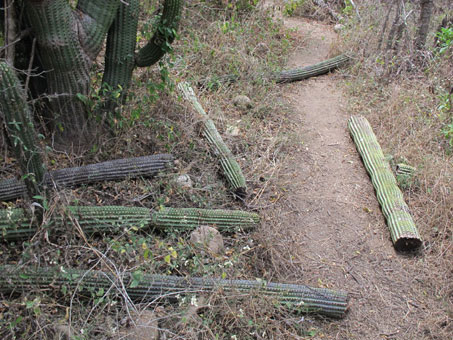
All throughout the sanctuary, cactus stems were strewn about, snapped off cleanly by high winds from the hurricane.
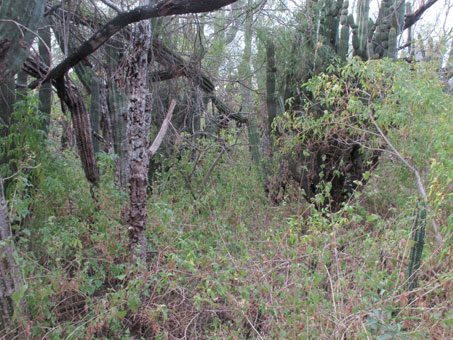
This was the thickest we've seen the undergrowth in our four visits.
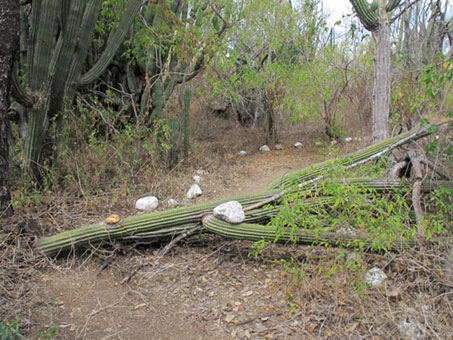
Another small Pitahaya dulce / Organpipe Cactus lies across the path.
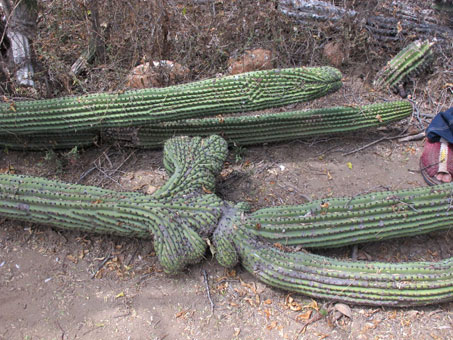
A beautiful crested Organpipe cactus (Stenocereus thurberi) has been toppled, roots and all by the wind. The caretaker plans to re-seat it.
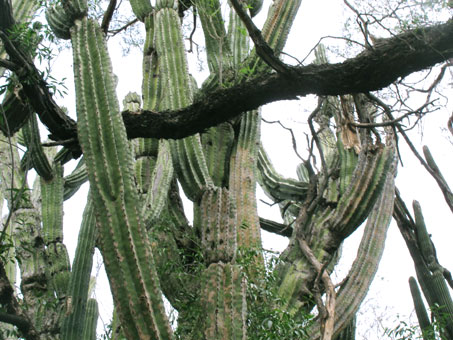
Giants like these were protected from the winds by nurse trees, mainly Mesquites, which are intertwined with the cacti. Cardón Barbón (Pachycereus pecten-aboriginum)
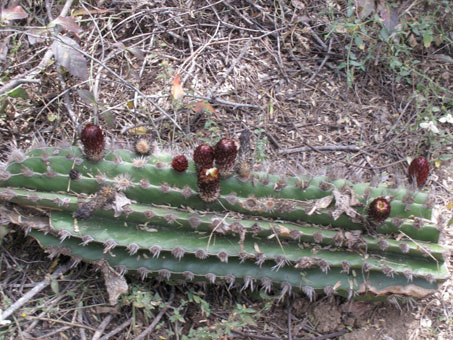
Last ditch effort from the broken stems: new buds.
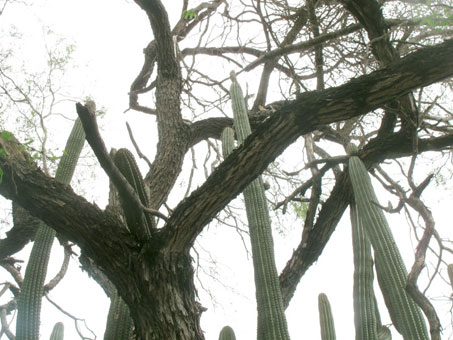
The nurse trees are vital for the health and longevity of the cacti in the tropical forest. Pitahaya dulce/Organpipe Cactus (Stenocereus thurberi).
Flower bud of Cardón Barbón.
Amidst the damage, there were many tiny annual and perennial wildflowers typical of the dry tropical forest, here and in other parts of the Americas. Acanthaceae seemed to be well represented among these flowers on our visit.
Olotillo (Tetramerium nervosum, Acanthaceae), a native perennial. The inflorescence is a spike with imbricate (overlapping) leafy bracts.
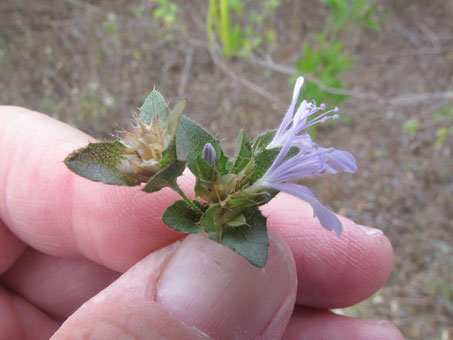
Loeselia ciliata (Polemoniaceae) is a slightly prickly annual or perennial herb of the undergrowth.
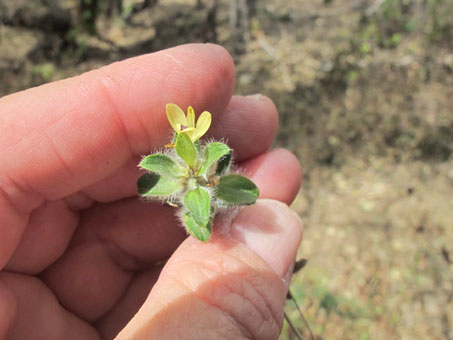
A tiny yellow flower arises from above each of the bracts in the spike of Olotillo.
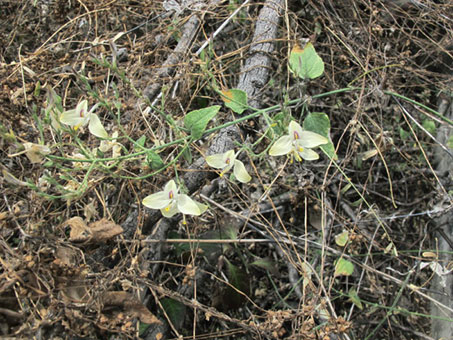
Rama toro / Arizona Wrightwort (Carlowrightia arizonica, another perennial in Acanthaceae). This was the most abundant wildflower of the sanctuary's understory. Flowers are cream to yellow-tinged and about 1 cm W.
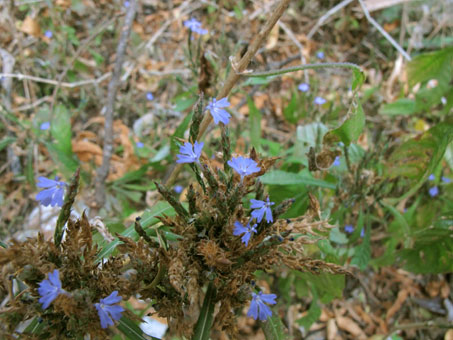
The angel-like flowers of Cordón de San Juan / Purple Scalystem (Elytraria imbricata, Acanthaceae) are tiny (5-6 mm W) and difficult to photograph in the low light of the forest. This was the second-most abundant of the flowers. The dark green pointy things are the spikey inflorescences, also with imbricate bracts.
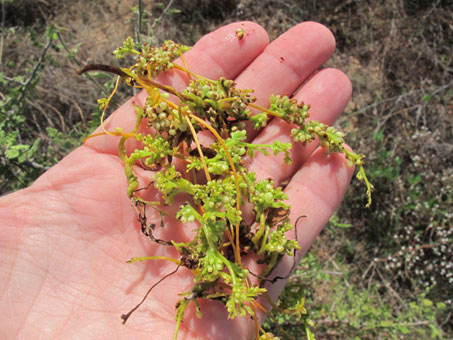
I saw this Dodder (Cuscuta sp., Convolvulaceae) at a different site about 20 km from the Sanctuary. It was on several different species in the scrub. This one is full of buds.
What one lichen expert once told me is best described as a "dustose" lichen. Here, on Lomboy (Jatropha cinerea, Euphorbiaceae), it is like a smudge of lime green dust.
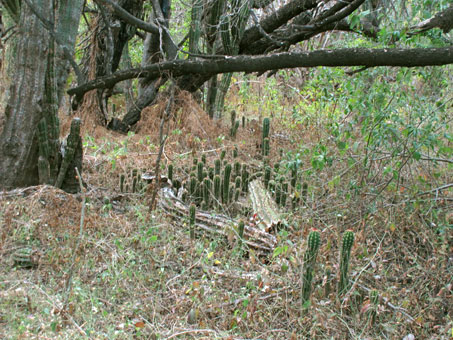
Cardoncitos (Cardón Barbón seedlings) growing under their nurse trees. Hopefully some day they will grow tall and large enough to replace their elders who have fallen alongside them.

The identification of this shrub had confounded me for several visits to the Sanctuary, but I just learned a helpful fact while visiting the herbarium in La Paz (see more on that below): Randia obcordata (Rutaceae) can have spines, or not. The first plants I saw had small, black fruit but no spines. This plant here had stout spines but no fruit.
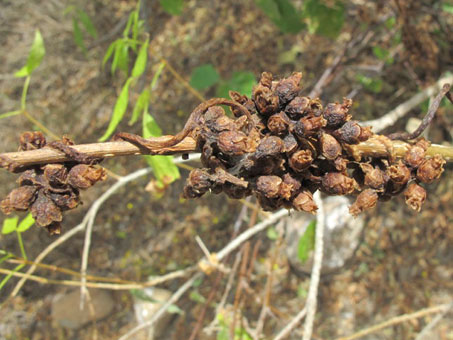
It is possible that this is the same species of Dodder (Cuscuta sp.), here on a Palo de Arco branch (Tecoma stans, Bignoniaceae) at the Sanctuary. It too grew on several types of plants and had had large clusters of flowers.
Closeup view of some of the lichens on the bark of a Lomboy. Trees and shrubs everywhere were covered in a variety of colors.
The Herbarium at CIBNOR (Centro de Investigaciones Biológicas del Noroeste), La Paz.
Something I have wanted to do for a number of years was to volunteer at the herbarium where I have been depositing my plant specimens since 2003. This year, things finally worked out and I was able to spend three mornings helping out the staff.
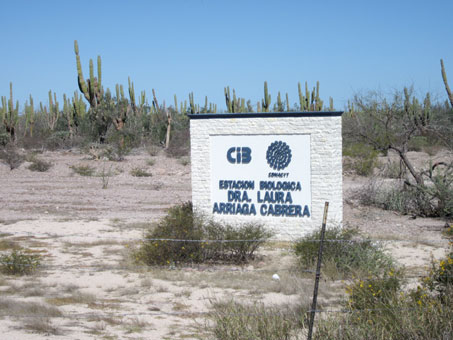
CIBNOR is located on the west side of La Paz bay, just north of the city, off Hwy 1 and the road to San Juan de la Costa.
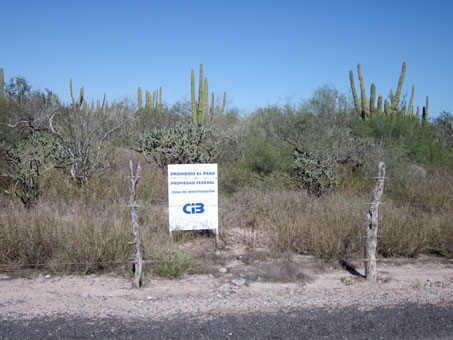
The area is closed to the public to preserve research plots and to prevent inadvertent damage to the area.
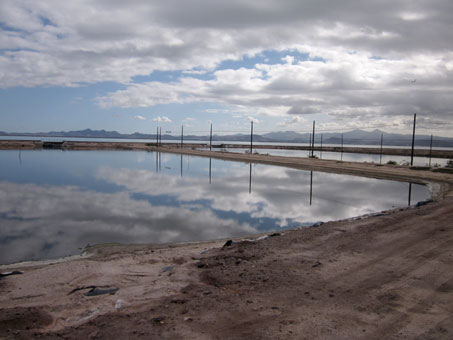
While waiting for everyone to show up, I took a stroll by some of the research ponds that are on the edge of Bahía de La Paz.
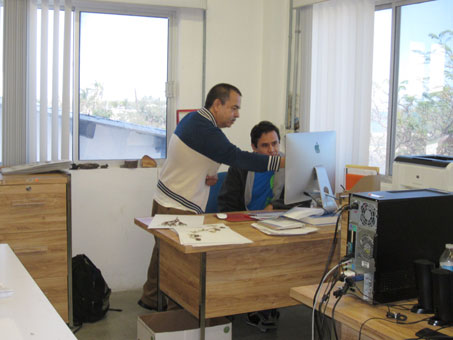
The Herbarium is staffed by just three people, including the Curator and Collections Manager (pictured here).
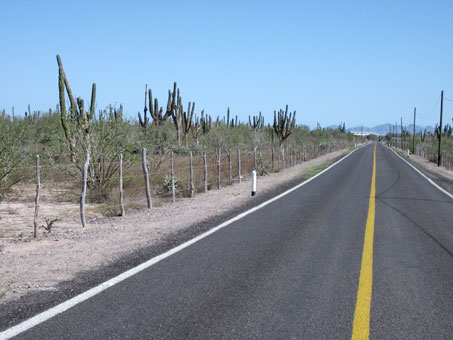
Much of the grounds is fenced to preserve the original desert scrub which is then utilized for field studies by researchers and students from the facility.
The entrance. Visitors must check in at the gate. The campus houses classrooms as well as research facilities in a number of fields.
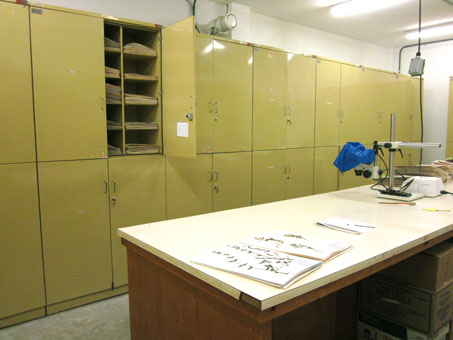
The facility houses over 28,000 specimens, mainly from the Baja California peninsula, with emphasis on the southern area.
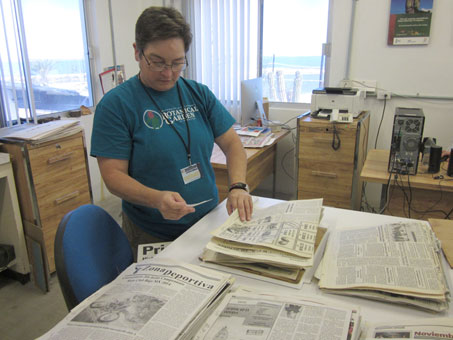
Having a fine time doing one of those tasks that had been put off due to understaffing: preparing duplicate specimens for shipment to the San Diego Herbarium. T-shirt look familiar?
I wish I had more time to share some of the other sights and plants from our trip, but it will have to wait until another time as we are preparing to head back to Alta California for the summer. Hopefully the drive north will be beautiful and green and we´ll see some lovely wildflowers we can share here next month. Until then, hasta la próxima…
Debra Valov—Curatorial volunteer















